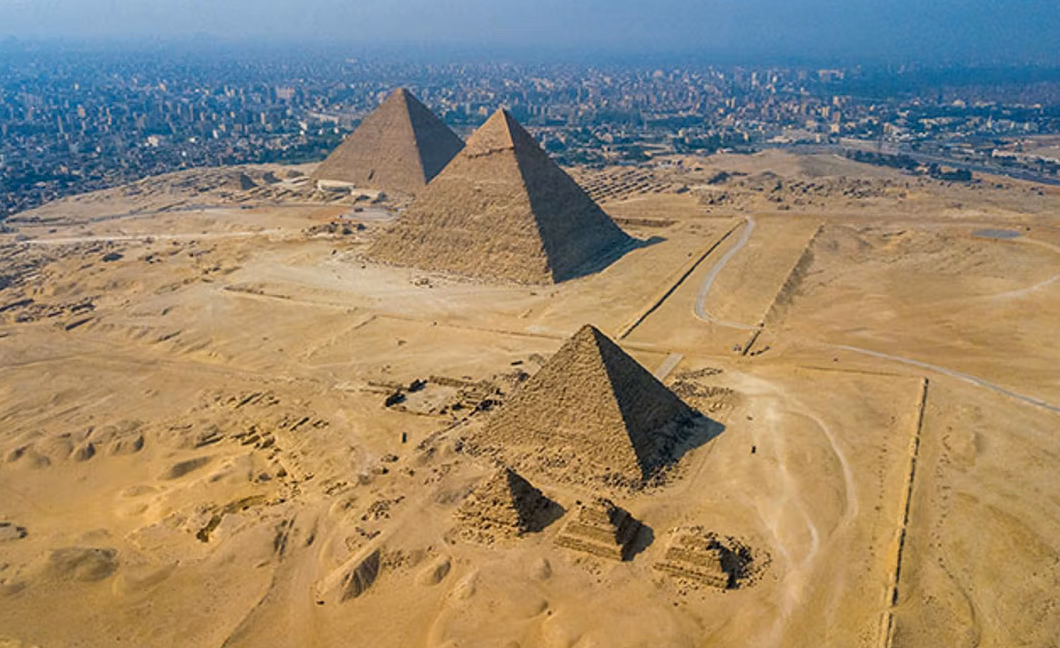 The Pyramids of Giza, located just outside Cairo, Egypt, are among the most iconic and mysterious monuments in the world. Built more than 4,500 years ago, these structures remain a symbol of ancient Egyptian civilization and continue to attract millions of visitors each year. Recognized as one of the Seven Wonders of the Ancient World, the Pyramids of Giza stand as a testament to human ingenuity, ambition, and spiritual devotion.
The Pyramids of Giza, located just outside Cairo, Egypt, are among the most iconic and mysterious monuments in the world. Built more than 4,500 years ago, these structures remain a symbol of ancient Egyptian civilization and continue to attract millions of visitors each year. Recognized as one of the Seven Wonders of the Ancient World, the Pyramids of Giza stand as a testament to human ingenuity, ambition, and spiritual devotion.
A Brief History of the Pyramids of Giza
The Giza plateau is home to three main pyramids:
-
The Great Pyramid of Khufu (Cheops)
-
The Pyramid of Khafre (Chephren)
-
The Pyramid of Menkaure
These pyramids were constructed during Egypt’s Fourth Dynasty of the Old Kingdom (circa 2600–2500 BCE). They were built as tombs for the pharaohs, reflecting the Egyptian belief in the afterlife.
The Great Pyramid of Khufu, the largest and most famous, originally stood at 146.6 meters (481 feet) and remained the tallest man-made structure on Earth for over 3,800 years.
Architectural Marvels of Ancient Engineering
The Pyramids of Giza were constructed using massive limestone and granite blocks, some weighing as much as 80 tons. Historians and archaeologists still debate exactly how these enormous stones were transported and placed with such precision, especially without modern machinery.
Key architectural highlights include:
-
Perfect alignment: The Great Pyramid is aligned almost perfectly with the cardinal points of the compass.
-
Mathematical precision: The dimensions reflect advanced knowledge of geometry and astronomy.
-
Complex interior: Narrow passageways, chambers, and shafts inside the pyramids demonstrate both architectural skill and symbolic meaning.
These features make the pyramids not only tombs but also masterpieces of ancient science and mathematics.
The Sphinx and the Giza Plateau
In addition to the pyramids, the Giza plateau is also home to the Great Sphinx, a colossal limestone statue with the body of a lion and the head of a pharaoh (often believed to be Khafre). The Sphinx has become an enduring symbol of mystery and strength, adding to the grandeur of the site.
Cultural and Religious Significance
For the ancient Egyptians, the pyramids were not merely monuments. They represented the bridge between life and the afterlife. Pharaohs were buried within them along with treasures, food, and sacred items intended to accompany them in eternity.
The pyramids also demonstrated the power of the pharaohs, who commanded vast resources and thousands of skilled laborers. Building the pyramids was as much a political and religious statement as it was a funerary project.
Tourism and Modern Importance
Today, the Pyramids of Giza are Egypt’s most famous tourist attraction. Millions of travelers from around the world visit Cairo each year to experience the wonder of these ancient monuments. Visitors can:
-
Explore the Great Pyramid and its chambers.
-
Visit the Solar Boat Museum, where an ancient pharaoh’s boat is displayed.
-
Marvel at the Great Sphinx and its legendary presence.
-
Enjoy panoramic views of the desert and Cairo skyline.
Tourism around the pyramids contributes significantly to Egypt’s economy, making them not only a cultural treasure but also a modern asset.
Mysteries and Theories
Despite centuries of study, the Pyramids of Giza still hold mysteries. Scholars debate:
-
How exactly the pyramids were built with such precision.
-
The astronomical significance of their alignment with stars.
-
The hidden chambers and possible undiscovered secrets within.
These unanswered questions continue to spark curiosity and inspire researchers, archaeologists, and travelers alike.
Preservation and Challenges
Like many ancient monuments, the pyramids face challenges such as:
-
Erosion from wind and sand.
-
Damage from tourism and pollution.
-
Urban expansion near Cairo.
Egypt’s government and international organizations are working to preserve the Pyramids of Giza so that future generations can continue to marvel at these ancient wonders.
Why the Pyramids of Giza Matter Today
The Pyramids of Giza are more than historical relics. They are:
-
A symbol of human creativity and determination.
-
A connection to one of the world’s oldest civilizations.
-
A reminder of the mysteries of history that remain unsolved.
Visiting the pyramids is not only a journey into the past but also an opportunity to reflect on the enduring achievements of humanity.
Conclusion
The Pyramids of Giza in Egypt are among the most extraordinary landmarks ever created. Their size, design, and historical importance make them unique treasures of the ancient world. Whether studied from afar or visited in person, they continue to inspire awe, curiosity, and respect.
As one of the Seven Wonders of the Ancient World, the pyramids stand as eternal guardians of history, reminding us of a civilization that thrived thousands of years ago yet continues to influence us today.

You must be logged in to post a comment.